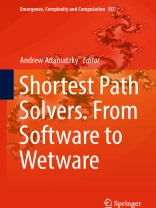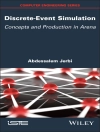This book offers advanced parallel and distributed algorithms and experimental laboratory prototypes of unconventional shortest path solvers. In addition, it presents novel and unique algorithms of solving shortest problems in massively parallel cellular automaton machines. The shortest path problem is a fundamental and classical problem in graph theory and computer science and is frequently applied in the contexts of transport and logistics, telecommunication networks, virtual reality and gaming, geometry, and social networks analysis. Software implementations include distance-vector algorithms for distributed path computation in dynamics networks, parallel solutions of the constrained shortest path problem, and application of the shortest path solutions in gathering robotic swarms. Massively parallel algorithms utilise cellular automata, where a shortest path is computed either via matrix multiplication in automaton arrays, or via the representation of data graphs in automaton lattices and using the propagation of wave-like patterns. Unconventional shortest path solvers are presented in computer models of foraging behaviour and protoplasmic network optimisation by the slime mould Physarum polycephalum and fluidic devices, while experimental laboratory prototypes of path solvers using chemical media, flows and droplets, and electrical current are also highlighted. The book will be a pleasure to explore for readers from all walks of life, from undergraduate students to university professors, from mathematicians, computers scientists and engineers to chemists and biologists.
Jadual kandungan
A parallel algorithm for the constrained shortest path problem on lattice graphs.- Gathering a Swarm of Robots through Shortest Paths.- The Min Sum-Min Hop and the Max Min-Min Hop bicriteria path problems.- Distance-Vector Algorithms for Distributed Shortest Paths Computation in Dynamic Networks.- Influenza Virus Algorithm for Multiobjective Energy Reduction Open Vehicle Routing Problem.- Computng shortest paths with cellular automata.- Cellular Automata Applications in Shortest Path Problem.- Checkerboard Pattern Formed by Cellular Automata Agents.- Do ants use Ant Colony Optimization.- Slime Mould Inspired Models for Path Planning: Collective and Structural Approaches.











